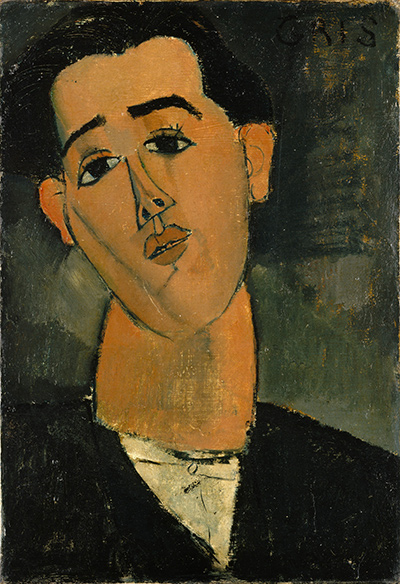The Portrait of Juan Gris is a 1915 painting by Amedeo Modigliani.
The painting genre is portrait, and it measures 21 5/8 x 15 in. (54.9 x 38.1 cm). The painting media is oil on canvas. The painting was created during the First World War.
The head and the cylinder-shaped neck in this Juan Gris painting looks carved similarly to African carving that Modigliani was fond of. The nose in this painting also depicts many African masks, and the artist almost placed it as a separate feature.
Overall, the face subtle organization into separate planes in the form of cubist origin shows the viewer that this was a prominent cubist painting. Modigliani used culture aspects from Europe and Africa to design the Portrait of Juan Gris.
Modigliani used his artistic skills to place all the features on the painting in a way that clearly communicated his theme to the viewer. He used both bright and dark colors to add more quality to the painting. The artist used black, brown and white color on the painting which gives it a rich texture. The neck and the face were painted with brown color while the hair and the shoulders were painted with black color.
The artist painted the head curved as if disconnected from the neck depicting the man in the picture was trying to hang on life. Modigliani was inspired by the world war one events that were happening during that time that made people look desperate. The artist also used a dark background on the painting to depict the desperate times that people were going through. The use of a long cylindrical neck also depicts that the man in the picture was facing a hard time.
Modigliani themes are clearly evident in the painting. He used curves in the painting especially on the face that makes the viewer to easily understand the artist message. The artist maintained the comical theme in the painting but also carefully placing everything in an artistic manner that makes the viewer be more interested in the painting.
Modigliani was more calculating compared to other cubist painters when he was composing his pictures. All the elements in the painting are put together with classical precision: shape, lines, color tone and the patterns are skillfully refined to form an interlocking arrangement that is free of any unnecessary decorations.




